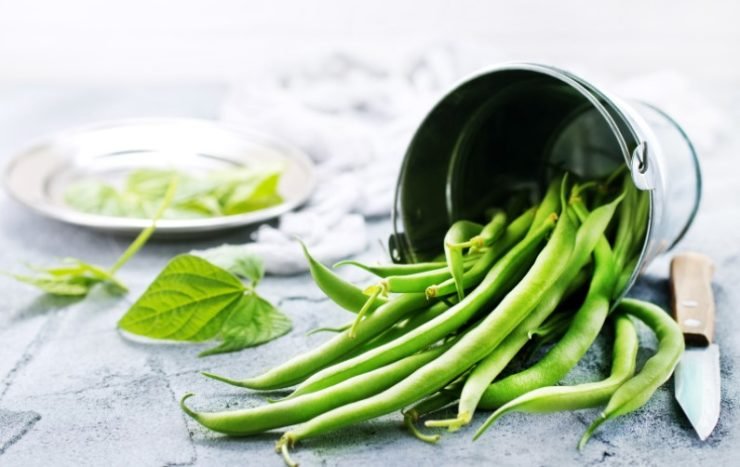As much as I love fresh green beans, it’s no secret that prepping them can take a lot of time.
Even so, I’ve found that the extra effort is worth it. Loose green beans are substantially more cost-effective, nutritious and delicious than frozen or canned alternatives.
Each summer I grow a variety of green beans, which means that I always have bushels to prep. Dragon Tongue Bush Beans, Golden Butterwax Beans, Tanya’s Pink Podded Beans – I love them all.
Regardless of the specific variety, they’re all prepped the same way. And over time, I’ve developed a certain efficiency with my methods.
In this article, I’ll share some of my secrets with you. The most important thing is matching your prep method to the volume of green beans at hand. Whether you’re dealing with a handful or a bushel, we’ll have dinner to your table in no time.
In This Article
How To Trim Your Green Beans? It Depends On How Many.
Just a handful? Snap Them.
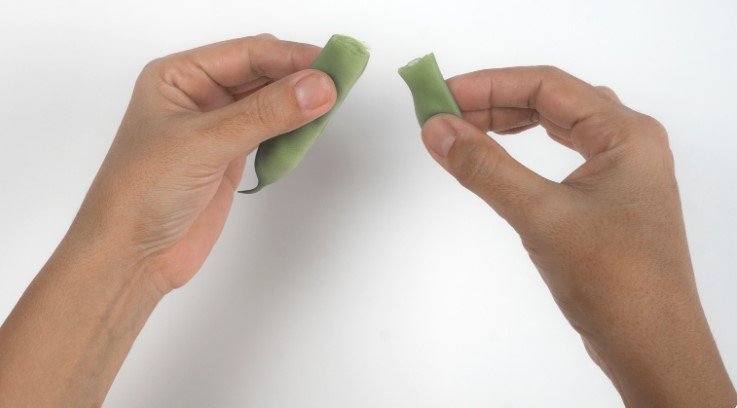
This method works best if you’re dealing with a small number of green beans, about 1 handful (10-15 loose beans).
In total, this should take about 2 to 3 minutes to complete. And it will leave you without much fuss or mess. Here’s how,
Take each washed and dried green bean in your dominant hand and identify the stem end. (That’s the slightly dry and shriveled nubby end where the bean was attached to the plant).
Pinch the bean just under the stem with your thumbs and forefingers and break the bean apart.
The pressure applied when you fold the bean at that point will cause the stem to snap off easily.
Discard the stem, and perform the same pinch and snapping motion on the opposite tip of the green bean, discarding that end as well.
Now, if you’d like, you can snap the remaining severed green bean in half for the perfect bite-size pieces and add them to your bowl of trimmed beans.
What You’ll Need:
- A bowl to collect trimmed beans
- A container for scraps
More than a handful? Snip Them.
If you have more beans than your fingers can comfortably snap, consider grabbing your kitchen shears to snip off the ends and continue cooking.
This is my go-to method for prepping 20-30 loose beans. It should take you about 5 to 7 minutes.

Pro-Tip: Sharp kitchen shears are essential. Otherwise, you may end up mushing your green beans instead of trimming them.
For this method, take a washed and dried green bean and hold it over your scraps container.
Using the kitchen shears, snip off just under the stem of the green bean.
(That’s the slightly dry and shriveled nubby end where the bean was attached to the plant).
Seriously, this is as no mess as you can get!
Flip the green bean around, snip off and discard the opposite end as well.
If you’d like, you can even snip your trimmed green bean in half for a quicker cooking time and perfectly portioned bite.
What You’ll Need:
- Sharp Kitchen Shears
- A bowl to collect trimmed beans
- A container for scraps
More than 1 lb? Cut Them.
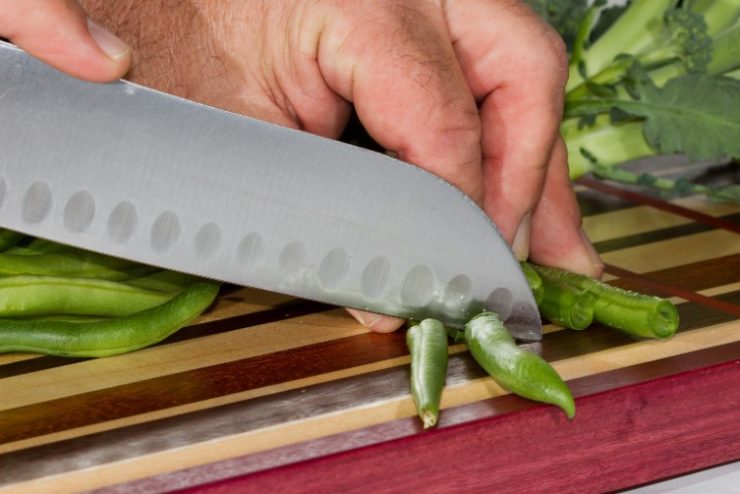
Sometimes, there are just too many green beans for you to process one at a time. If you’re prepping more than 1 lb (35-40 loose beans), try cutting them instead.
This should take less than 10 minutes, per pound.
If you’re making a casserole, whipping up a side dish that can feed your whole family, or prepping an entire garden’s harvest, you’re going to want to tackle these beans by the handful.
First, make sure your cutting board is stabilized on your counter to avoid injury.

Pro-Tip: You can either place a rubber grip or wrung out but damp paper towel under the cutting board to keep it from slipping around.
Gather a manageable handful of green beans and bundle them up facing the same way, end to end.
Curl your knuckles under your fingers so that your grip resembles a flattened fist.
Then, use the horizontal plane created by your knuckles to guide your knife through all of the beans, just under their stems.
Turn the bundle of green beans around on your cutting board, and with the same grip, cut off and discard the opposite tips of the beans.
If you’d like, you can cut the trimmed green beans in half and move them to your prep bowl.
Continue cutting through the green beans handful by handful until you’ve processed all of your beans.
What You’ll Need:
- A sharp chef’s knife
- Cutting Board
- A bowl to collect trimmed beans
- A container for scraps
Don’t Forget To Wash Those Beans!
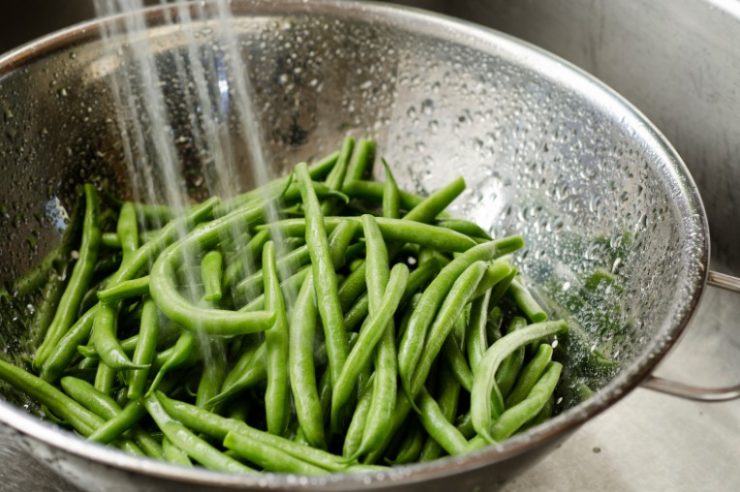
Regardless of the method you use, before you begin the trimming process always give your beans a good wash and look over.
Place your beans in a colander, and discard any squishy, mushy, brown, or molded beans.
Rinse the colander under cool water to remove dirt, dust, and garden debris.
Turn out the beans into a single layer to dry. To speed this up, you can pat them dry with paper towels.
Time-Saving Alternatives
However you slice them, prepping fresh green beans takes time. But there are a few alternatives that will get you a result faster, although usually at a lesser level of quality.
Frozen Green Beans
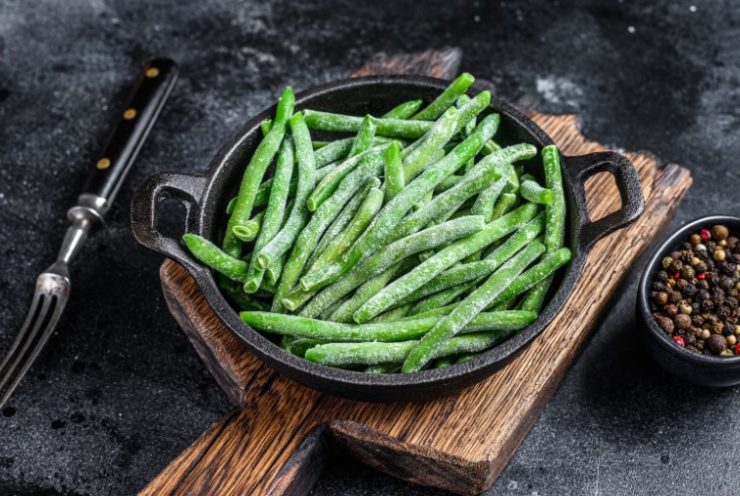
Frozen green beans are the next best and most nutritious option in place of fresh trimmed green beans.
They are convenient, already processed, and often just need to be steamed or boiled before serving.
However, a reheated frozen green bean would be much softer and not snappy, like a freshly trimmed green bean.
If you’re throwing together a quick side of steamed and buttered green beans, the texture may not matter that much to you.
But if you’re putting effort into making a dish where green beans are the star of the show, you may want to take the extra time and opt for beginning with raw beans.
Canned Green Beans
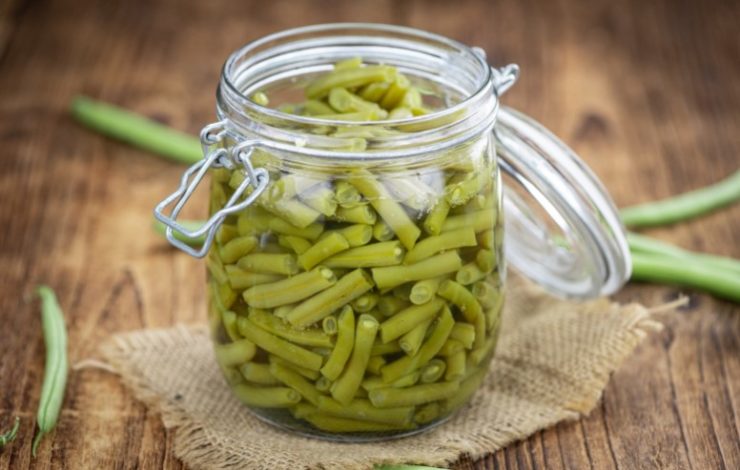
Canned green beans are another affordable, quick, and accessible alternative to unprocessed, fresh green beans.
Canned green beans will have higher sodium content than raw green beans, which you would completely season to your tastes.
The texture will also differ between incredibly soft and tender canned green beans and toothsome, crisp fresh beans.
Frequently Asked Questions
Is it necessary to trim green beans?
Yes, you should trim your green beans to eliminate tough and undesirable stems.
How do you quickly trim green beans?
Depending on the number of green beans you have to trim, snapping the stem and tips off with your fingers is best for a handful of beans. Kitchen shears or a chef’s knife will be the most efficient as you have more beans to prep.
Do you cut or snap green beans?
You can cut or snap green beans to trim them; it’s up to you. Pinching and snapping off the tops is quick when you only have a handful of beans to prep. Whereas cutting them will speed up prep time for larger amounts of green beans.
